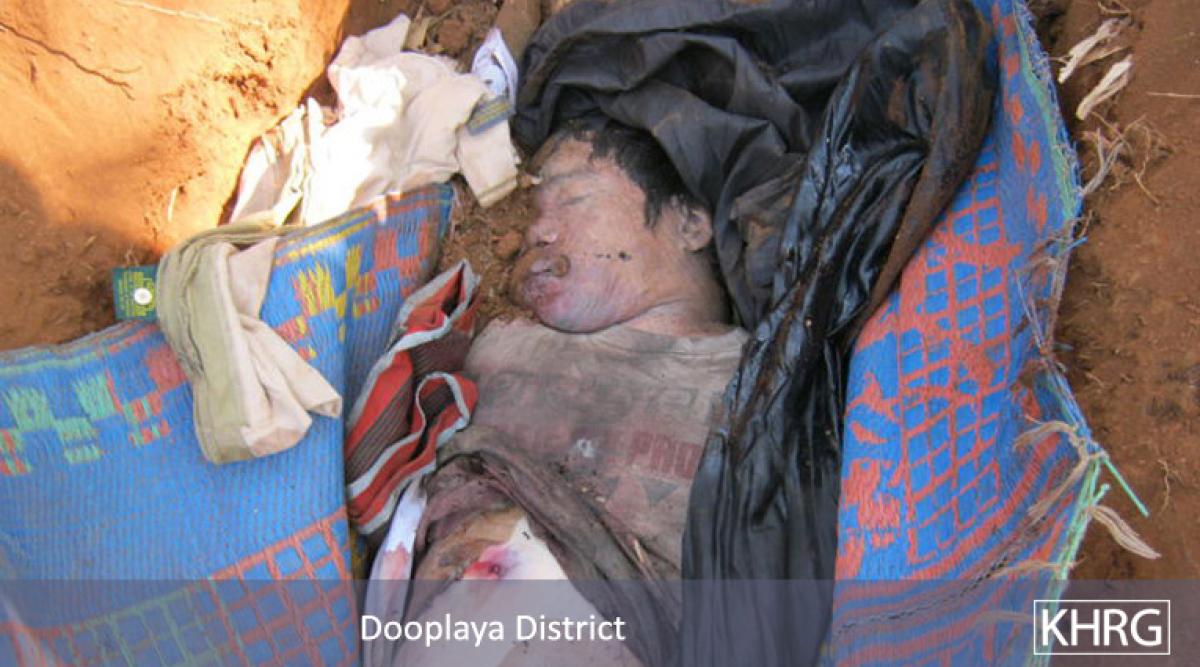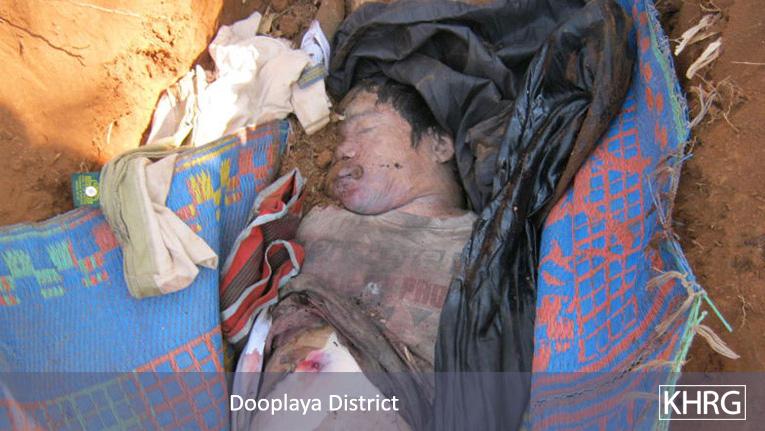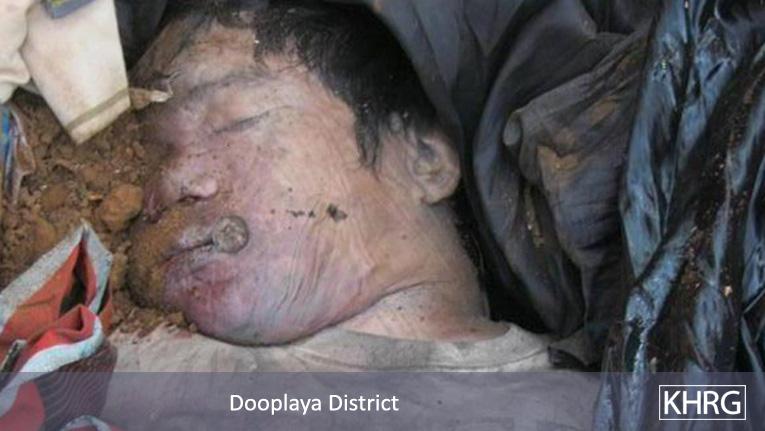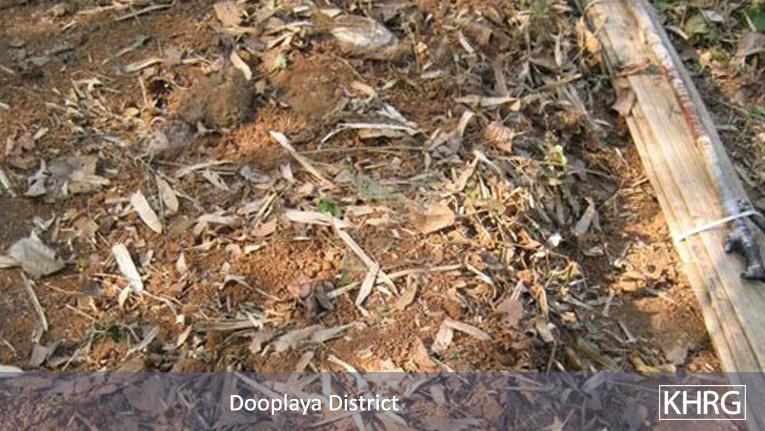This bulletin details the killing of Pah Te--- by Tatmadaw troops in southern Dooplaya District. Pah Te--- was shot and killed by troops from LIB#407 as he and his wife returned to their field hut on the night of February 24th 2011. The soldiers fired on Pah Tee--- and his wife without hailing or warming them, and do not appear to have made an effort to verify that the villagers were legitimate military targets before directing an attack at them. Information in this bulletin is based upon interviews with local community members, as well as photographs of Path Te---'s body. Because Pah Tee---'s body was photographed seven days after he was killed, readers should be advised that images in this bulletin are graphic.
On March 3rd 2011, a KHRG researcher in Dooplaya District reported that Pah Te---, a 36-year-old resident of La--- village, Kya In Township, had been shot and killed by Tatmadaw soldiers from LIB #407 on February 24th 2011. KHRG's researcher spoke with several sources in La--- about the incident, including a community leader and a source close to Pah Te---'s wife Naw Tu---, 42, who was with him when the shooting occurred.
According to the source close to Naw Tu---, at midnight on February 24th, Pah Te--- and Naw Tu--- were returning from hunting outside of La--- village. La--- is located south of the road that runs southeast from Kyaikdon Town towards the Thailand-Burma border. As the two approached their farm field hut, located less than two kilometres outside the village, soldiers from Tatmadaw LIB #407 opened fire on them. The source said that the soldiers did not call out a warning or hail Pah Te--- and his wife prior to opening fire. According to the source, Naw Tu--- screamed when the shooting started and the soldiers stopped firing, but not before a bullet struck Pah Te--- in the lower part of his chest. Naw Tu--- then tried to pull her injured husband back to their field hut, but he died shortly after being shot.
The next morning, on February 25th, soldiers from LIB #407 returned to investigate the shooting. According to the source close to the family, soldiers from LIB #407 buried Naw Tu---'s husband next to a nearby bamboo tree, and the Battalion Commander said he would pay her 100,000 kyat (US $117); he paid her 70,000 kyat (US $82) immediately and a village official paid the remaining 30,000 kyat shortly thereafter (US $35). On March 3rd, seven days after the shooting, a KHRG researcher witnessed as villagers from La--- exhumed Pah Te---'s corpse to investigate where he had been shot, and photographed the body.
A community leader in La--- told KHRG's researcher that soldiers from LIB #407 had admitted to their mistake and that he believed the soldiers had shot Pah Te--- by accident. After the incident, KHRG’s researcher asked local residents if LIB #407 or other Tatmadaw units had had problems with Pah Te---, such as suspicions of cooperation with a non-state armed group. According to the researcher, villagers responded that Pah Te--- had not previously had any problems or faced accusations that might have led to his deliberate killing. At the time of the incident Naw Tu---'s husband had been carrying a flashlight and black-powder musket that he used for hunting. Villagers in La--- said he had regularly carried it in the village with no prior problems, including in the presence of Tatmadaw soldiers. Such muskets, often homemade by villagers or local blacksmiths, are common in rural areas where most households rely on hunting small game to supplement their diets. In his analysis of the incident, KHRG's researcher stated that the 100,000 kyat payment made by the LIB #407 Battalion Commander to Naw Tu--- strongly suggested that the Tatmadaw soldiers had had no prior problems with Pah Te---, and that the shooting was accidental. The source close to the family, however, expressed frustration that Pah Te--- and his wife, who were walking with a flashlight, had been fired upon without warning or without being hailed by the soldiers.
While it is likely that Pah Te---’s shooting was accidental, Tatmadaw soldiers did not make an effort to verify whether Pah Te--- and his wife were legitimate military targets prior to directing an attack at them. Such indiscriminate attacks have been repeatedly documented by KHRG, both in Dooplaya and elsewhere in eastern Burma. This incident, then, further underscores the risks faced by civilians attempting to survive in the face of ongoing conflict in Dooplaya District.










